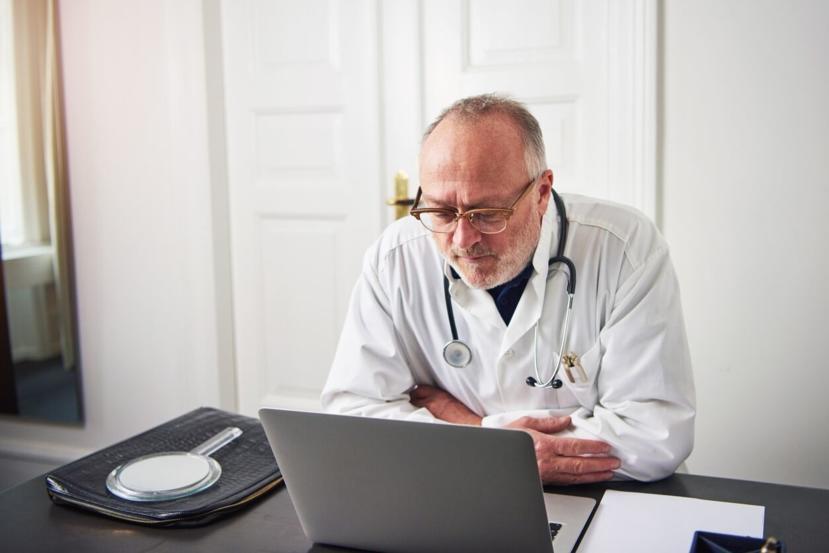Why Emails and Phone Calls Should Be Essential to Primary Care

The current world is dominated by electronic media. In healthcare, a primary care physician’s everyday work is increasingly affected by the use of emails and phone calls with their patients. More than 85% of physicians use the internet and over 55% use email to correspond with staff members and colleagues. What’s more, an increasing number of patients are willing to use electronic media to communicate with their physicians. They believe it provides them with a sense of safety and easier access to care. However, physicians are reluctant to answer calls or exchange emails. Why is this so?
With rising insurance co-pays and deductibles “people are really trying to avoid going to the doctor if at all possible. Instead, they pick up the phone, looking for free medical advice: Physicians “have seen a drastic change in how many phone calls the practices are getting” said Mary Pat Whaley, president of Manage my Practice. Physicians’ offices are struggling to handle everything from phone calls, emails, doctor appointment, prescription refills, to questions and concerns from ill patients and billing issues. Research shows that every phone call made to a patient estimates to $15-20 per day and within a year, prescription renewal calls alone cost over $10,000. “They can’t give all sorts of medicine away and not get paid for it. It’s a business, they have to keep the lights on” said Whaley.
Still, using emails and telephones provides several advantages to your patients. Perhaps they live farther away and transportation is a problem or maybe they are too ill to come into your office and want to avoid infecting others. As a primary care physician, email and telephone communication is also important to your practice for a number of reasons. Follow-up calls allow you to answer patients’ questions, concerns, and any misunderstandings. They also allow you to check on patients’ progress and make further assessments about their conditions/treatments. However, what can you do to avoid countless phone calls and emails a day, yet still ensure patient satisfaction and keep your patients coming back?
- Manage your patients’ expectations – Like it or not, when it comes to health, most patients will call every half hour to get the answers they seek. So instead of saying ‘we will call you back’, look over your schedule and give them a time frame of when they can expect you to call back. If new patients are calling in, greet them warmly and let them know about the standards for call backs.
- Have staff members handle phone calls and emails effectively – Make your practice’s expectations to your staff members clear. Set up a meeting where you will discuss who will handle patient phone calls and emails, what to do when persistent patients call in, what to say, and how to accommodate their requests. Together with your staff members, make it a rule to be friendly, attentive, courteous and task-oriented.
- Secure a patient portal for communication – While telephone conversations and voice mails are effective, provide your patients with a way to send electronic messages directly to your practice through a secure website – sensitive personal health-related information should not be sent through unsecured email. Give them that extra and safe space to jot down their questions and concerns and improve patient service. When you reply back, make sure that your emails are easy to understand and be sure to inform patients when and how often you check your email.
- Provide patients with educational materials – At the end of each patient visit, provide patients with educational materials. This may include pamphlets or brochures on what procedures you conduct, your office hours, as well as information specific to their conditions / treatments. The objective is to give your patients answers to their routine questions so that they do not feel the need to continuously call.
- Give patients a summary of their doctor visit – Give your patients a summary of their doctor visit. This is a good chance to ensure that they understand all the information that they have received from you, reiterate relevant points (teach-back method), and anticipate any questions on their behalf. Moreover, this will reduce the number of calls or emails that your practice receives from patients requesting clarification of information.
- Set up a tracking follow-up system – Establish a system for tracking follow-up through a computerized calendar or patients’ electronic health records. “They may be trying to reach you on your cell phone, but you may not be reachable; that also wouldn’t be the best. To some extent, you have to have a system where patients should always be able to reach somebody without having to call multiple different numbers” said Christina Gillespie, an otolaryngologist at Ocean Otolaryngology Associates. Work with staff members to identify which group of patients would best benefit from follow-up. In addition, identify staff members that will help you with the schedule for this tracking system and update it whenever necessary.
When asked why emails and phone calls should be essential to primary care, the answer is simple: they promote good and solid working relationships between you and your patients. You would be surprised as to how many patients enjoy personalized phone calls and emails, and how greatly they benefit from them. According to recent findings from a conducted survey, more than 88% respondents believe follow-up is a good idea. Positive response rates came from both phone calls made and emails sent out. In addition, significantly higher levels of patient satisfaction with care were seen from those who reported receiving phone calls and emails, as opposed to those who did not.
Follow-up phone calls and emails are essential for monitoring patients’ health, confirming medication regimes, scheduling appointments, reinforcing knowledge and understanding, verifying follow through on referrals, as well as sharing test results. Here is what you can do during follow-up phone calls and emails:
- Ask patients’ to write down the information that you are providing them with;
- Have patients’ keep track of their clinical values (blood pressure, blood sugar, weight, etc.) and share the information with you;
- Encourage patients to bring his/her prescription medications to the phone for review;
- Have patients’ fill out a follow-up instruction form via email;
- Send patients’ instructions on medications that they should be taking and highlight how important it is that they stick to a proper regime;
- Provide patients’ with directions on where you see their clinical values are showing cause for concern (high blood pressure levels, high blood sugar levels, weight gain, etc.);
- Thank patients for recording their health information, stress how helpful it is, and provide clinical feedback;
In any given situation when it comes to health, it is your duty as a primary care physician to determine privacy rules, as well as follow through with federal laws and regulations. Privacy concern is a major issue as it can lead to patient confidentiality risks. Unlike face conversations, callers or e-mailers cannot identify one another visually. This, in turn, makes it difficult to recognize the true identity of both the patient and the physician. Thereby, it is desirable to consider ways in which you can eliminate or at the very least, reduce such violations. Above all, the promise and respect of patient confidentiality is key.
With the realization of electronic health environments, it is essential that physicians are up-to-date on the latest medical news and events, as well as able to establish standards and recommendations of good use for their patients. Phone and email communication is still considered by both physicians and patients as an effective approach towards improving care and follow-up actions, as well as a way to reduce unnecessary visits to emergency services. Patients expect physicians to phone in order to reveal test results and offer clinical feedback. Electronic communication is growing on a daily basis and its practice in healthcare is no exception. With proper use and implementation, it can lead to improved patient understanding, reassurance, and increased quality of patient care.











